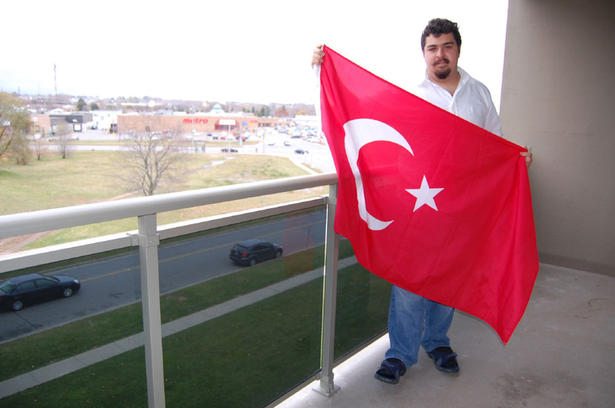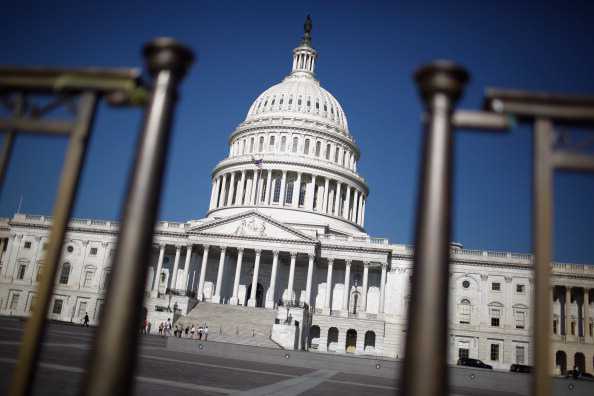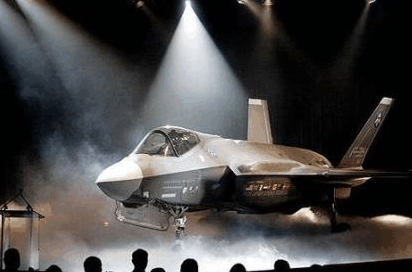(veteranstoday.com)
“WIKI” STYLE ESPIONAGE LANDS $300 BILLION DOLLAR SUPER-PLANE PLANS
By Gordon Duff STAFF WRITER/Senior Editor
“Another spy disaster like Pollard, shoved under the rug too long due to pressure from the powerful Israeli lobby.”
On April 21, 2009, the Department of Defense announced the theft of 1.5 terabytes of data on the F-35 Joint Strike Fighter, the platform meant give the United States and her allies air superiority for the next 40 years. In a flash, all that was gone, $300 billion dollars of funding down the drain, every system, defense, offense, stealth, everything needed to build one or shoot it down, all gone. Day one, China was accused but it wasn’t China, it wasn’t Iran, it wasn’t Pakistan. The theft left a clear signature, one identical to the data Wikileaks has been receiving, sources inside the Pentagon repeating the actions of Israeli-Soviet spy, Jonathan Pollard. As vital as the F-35 is to America’s defense, Pollard’s triumph on behalf of Soviet Russia and Israel dwarfs the current espionage coup.
Since the 2009 announcement, there has been nothing but silence.
When the theft was announced, Pentagon “damage control” went into action immediately branding the disaster as “unimportant” while scrambling to look for any possible way to “put the toothpaste back into the tube.” What Secretary Gates came up with was a simple denial and to pretend it never happened. With the continual efforts by the Israeli government to secure the release of master spy Jonathan Pollard, a “witch hunt” for another Israeli spy would endanger America’s hopes of winning a settlement between Israel and the Palestinians.
There was no real question, this was another Israeli operation, their “signature” was all over it.
“AN UNPRECEDENTED DISASTER”
What did America lose? 15 years of research and development? That doesn’t come close. Key components of the F-35, from stealth materials, flight and weapons systems, to tens of thousands of man-hours of systems programming are now “out there,” available to any potential rival, military or commercial. At best, it could be considered a $300 billion dollar bank robbery, by American standards, nothing new in today’s financial world.
At worst, nations whose defense capabilities were decades behind the US can now be at par, as the F-35 was estimated to be “air superiority capable” until at least 2040. Data stolen could make production of a comparable aircraft possible in as little as 36 months, particularly with several projects in the offing, Russia/India and in China, each of which are capable of quickly adapting upgraded systems.
The JSF (Joint Strike Fighter) in its three variants, conventional takeoff/landing (CTOL), carrier variant (CV) and short takeoff/vertical landing (STOLV), are scheduled for production through 2026 with estimates of service life until 2060 and beyond. Export versions of the F-35, “detuned” are available for American allies, NATO and Israel. The F-35 delivers more “punch” per dollar than any current “legacy” fighter by a margin of as much as 8 to 1. The economics of “stealing” the F-35 and auctioning it off, system at a time, is tremendous.
Any nation with a substantial defense industry will have immediately gained a decade or more in, not just stealth fighter/bomber design, but hundreds of areas of science applicable to UAV drones, missiles, including nuclear ICBMs (intercontinental ballistic missiles), and smaller missile systems, not only air defense but against helicopters and armour as well. Every advanced technology America has is in the F-35 somewhere.
Stealth technology from the F-35 can be adapted to the guidance systems stolen and transferred to China, believed by Israel also, technology that threatens America’s ability to project air superiority through use of its aircraft carriers. Conventional missiles, not believed capable of “taking out” America’s carriers can be upgraded to defeat air defense systems years from being off the drawing boards.
AIR DEFENSE VULNERABILITY
In March, 1999, on the 4th day of American involvement in the Bosnian war, Serbian forces shot down an F-117 stealth bomber using a Soviet SA 300 air defense system with radar modifications based on data secured through espionage.
Data on the resonant frequencies of the materials and surfaces of the F-117 made it possible for radar to, not only detect a plane previously believed “invisible’ at a range of 13 kilometers, but to successfully destroy one, an embarrassment the US feels the sting of even today.
The stolen data on the F-35 covers more than simple materials but all jamming and other defensive systems and performance characteristics. Air defense systems can now be tuned specifically to find only the F-35 if so required.
INITIAL SECURITY BREACHES IGNORED
In 2008, British based BAE Systems, a subcontractor for Lockheed Martin, was discovered to have allowed access to highly classified F-35 technologies through, not only physical access to its facilities but lack of normal computer safeguards. POGO (Project On Government Oversight), a whistleblower/watchdog group, learned of the Pentagon’s lack of normal project security safeguards and requested a copy of the Inspector General’s security report. Though documents showed the Pentagon was aware that key weapons systems had been compromised in Britain, well before 2008, security at project facilities in the United States was not brought up to required standards.
Defense Security Service audits from as early as 2001 had not been filed and the agreement with British contractors allowed them to refuse to report to the Department of Defense on an “at will” basis. In fact, the agreement with Britain contained no guarantees of any kind for security and no functioning authority to limit spying.
THE TRAIL OF THE SNAIL
Wikileaks are called “leaks.” Julian Assange darts from country to country, hotel to TV studio, always ahead of the security forces hunting him down, a veritable “Nordic” bin Laden. Newspapers are peppered with photographs of a boyish face in the uniform of the American army, identified as the potential “leaker.” The 46,000 intelligence/counter-intelligence officers of the Department of Defense, supplemented by the FBI and 16 other agencies and 40 other departments, more “bodies” than currently serve in Afghanistan, we are told, are unable to rein in this “dangerous duo.”
Documents by the hundreds of thousands are leaked, upon qualified examination, showing careful screening with many documents edited and more selected out of series with careful gaps and omissions. A single non-commissioned officer, watched 24 hours a day by tens of thousands of security officers and threatened with life in prison, is an unlikely suspect. However, there has been no mention of any others nor has there been a mention of an investigation of any kind. In fact, there seems to me no attempt whatsoever to curtail these current leaks.
What does this tell us?
WHEN IS A LEAK “HACKING” AND WHEN IS HACKING A “LEAK” AND WHAT IS “ESPIONAGE?”
It was never announced when, exactly, the theft of the F-35 data occurred. The press release was April 21. 2009, long enough after President Bush left office for the blame to evade his administration, one infamous for “leaks” such as the “Scooter” Libby (Liebowitz) “outing” of CIA nuclear proliferation specialist Valerie Plame.
Israeli citizen, Jonathan Pollard, convicted for spying on America and sentenced to life in prison in 1987, is, we believe but can never be sure of, the most successful spy in world history. As with the F-35, the “cover story” is always carefully deceptive as to not panic the public or cause a lack of confidence, perhaps rightly so, in America’s ability to secure secrets. Pollard had two primary targets, our nuclear response capability and NATO’s defense capabilities against the Soviet Union. Both were destroyed by Pollard whose materials were passed through Israel directly to the Soviet Union at the height of the Cold War.
Every weapon design, yes, our stealth aircraft capabilities and our NATO battle plans were among the truckload of papers Pollard sold to Israel, a country where he is considered a national hero. Pollard may have been our last “paper” spy. Everything today is electronic and spies who steal American secrets can be compared to unruly chatroom members or video game enthusiasts.
Despite the “cute” attempt by the Department of Defense and Secretary Gates to refer to espionage as “hacking,” there is nothing either innocent or harmless about it. As all data is formatted for electronic media and secured by firewalls and passwords, all espionage is “hacking.”
The difference between “leaking” and “spying” is semantics. The goal is the same, destruction of the defense capabilities of the United States, except “spying” pays better.
The people responsible for each, particularly when they access the same systems and overcome the same roadblocks, all requiring the same physical access, are one in the same. Those who “leak” perform an identical task to those who spy. Those who leak, those who have leaked appear to be, to any reasonable person, exactly the same people who are spying now and who were supporting Pollard.
The first place we look, before new Russian, Indian, Iranian or Chinese version of the F-35 take flight or our first F-35 meets a fiery end is Israel. No Chinese or Pakistani’s or Iranians have gained by the F-35 espionage “clone” operations styled after “Wikileaks.” Wikileaks has proven one thing, there is a major spy operation in the Pentagon with broad access. It is immune to investigation. Only political power can generate this kind of protection.
Assange is a recipient of information he likely believes is real. Our investigations prove different. The Pentagon leaks were carefully edited, thousands of reports were reconstructed and falsified and hundreds of thousands were removed as inconsistent with an unknown political agenda. This requires full access to Pentagon computer systems, PROMIS software and hundreds of man hours.
It requires, in fact, a broad spy operation inside the Pentagon that enjoys its ability to operate with impunity. Wikileaks carries an Israeli signature, the leaks damn only Israeli enemies, shield Israeli operations and are time to serve Israeli interests. Hundreds of Israeli citizens work in the Pentagon. None of this should be a surprise to anyone.
The F-35 debacle is exactly the same. Where there was some cursory discussion of investigation Wikileaks, the F-35 thefts were, can we say “forgiven?”
, November 2, 2010





